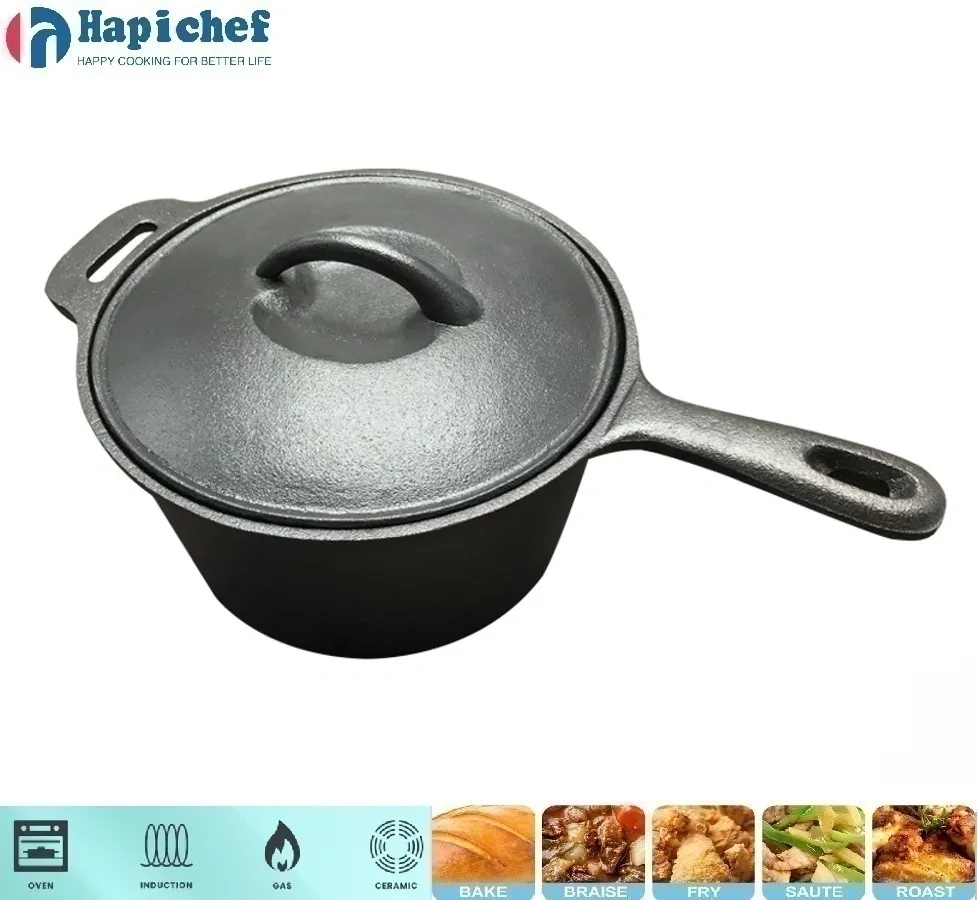How Cast Iron Saucepans Enhance Flavor: The Science Behind Cooking in Cast Iron
Cast iron cookware has been a staple in kitchens for centuries, prized for its durability, versatility, and unique ability to enhance the flavor of food. The use of a cast iron saucepancast iron saucepan goes beyond merely cooking; it offers a distinct cooking experience that brings out richer tastes and textures in dishes. The secret to its exceptional flavor-enhancing properties lies in both its physical characteristics and its interaction with food at a molecular level. This essay delves into the science behind cooking in cast iron and how this time-tested cookware elevates the flavors of the meals it helps prepare.

The Science of Cast Iron Saucepan: Heat Retention and Even Distribution
One of the key features of cast iron sauce pot with lid is their unparalleled ability to retain and distribute heat evenly. Unlike some modern materials like stainless steel or aluminum, cast iron retains heat for a longer period and distributes it more evenly across the cooking surface. This results in a more consistent cooking temperature, which is crucial for enhancing the natural flavors of food.
Cast Iron Saucepan: The Flavor-Boosting Process
The process of "seasoning" a cast iron saucepan—coating the surface with oil and heating it to create a non-stick, polymerized layer—plays an important role in the enhancement of flavors. When properly seasoned, cast iron develops a natural non-stick coating that not only makes cooking and cleaning easier but also contributes to the flavor profile of dishes. This layer of seasoning absorbs the natural oils and flavors of the ingredients as they cook, creating a symbiotic relationship between the food and the cookware.
Interaction with Acidity: The Cast Iron Saucepan Advantage
Another reason why simẹnti irin saucepan enhance flavor is their interaction with acidic ingredients like tomatoes, wine, or vinegar. Contrary to common belief, cast iron actually imparts a subtle metallic taste that can add a unique layer of complexity when cooking acidic dishes. The iron itself can react with acids, sometimes imparting a hint of iron into the food, which some people find adds to the dish’s overall depth and savory quality. This reaction is most noticeable in long-simmered sauces or stews where acidic ingredients are a key component.
The Long-Term Flavor Evolution of Cast Iron Saucepan
One of the most compelling aspects of cooking with a cast saucepans is the way the pan evolves over time. With each use, the seasoning layer deepens, and the pan develops a more sophisticated cooking surface. This process can make cast iron a unique asset for certain types of dishes. For instance, cast iron is particularly beloved for preparing dishes like risotto, sauces, or caramelized onions. Over time, the flavors of these dishes begin to interact with the seasoned surface of the pan, creating subtle flavor changes and a more complex taste profile that becomes increasingly layered with each use.
In summary, the science behind cooking with a iron cast saucepan reveals why this traditional cookware has stood the test of time. From its excellent heat retention and distribution to its ability to develop a rich, flavor-enhancing seasoning, cast iron brings out the best in food. Whether cooking meat, vegetables, or sauces, the iron itself interacts with the food in ways that are not possible with modern non-stick or stainless-steel cookware. The end result is a more flavorful, savory dish that reflects the natural qualities of the ingredients, enhanced by the chemistry between food and pan. Cooking in a cast iron saucepan is more than just a practical choice—it is an investment in creating dishes that are rich, nuanced, and unforgettable.
-
Revolutionary Cast Iron Griddles Redefine Outdoor CookingIroyinMay.09,2025
-
The Ultimate Guide to Cast Iron BBQ GrillsIroyinMay.09,2025
-
Revolutionize Your Kitchen with Premium Cast Iron Casserole CookwareIroyinMay.09,2025
-
Premium Cast Iron Bakeware CollectionIroyinMay.09,2025
-
Our Premium Cast Iron Skillets CollectionIroyinMay.09,2025
-
Discover the Art of Cooking with Premium Cast Iron Dutch OvensIroyinMay.09,2025
-
The Versatility of a Cast Iron CasseroleIroyinApr.21,2025
